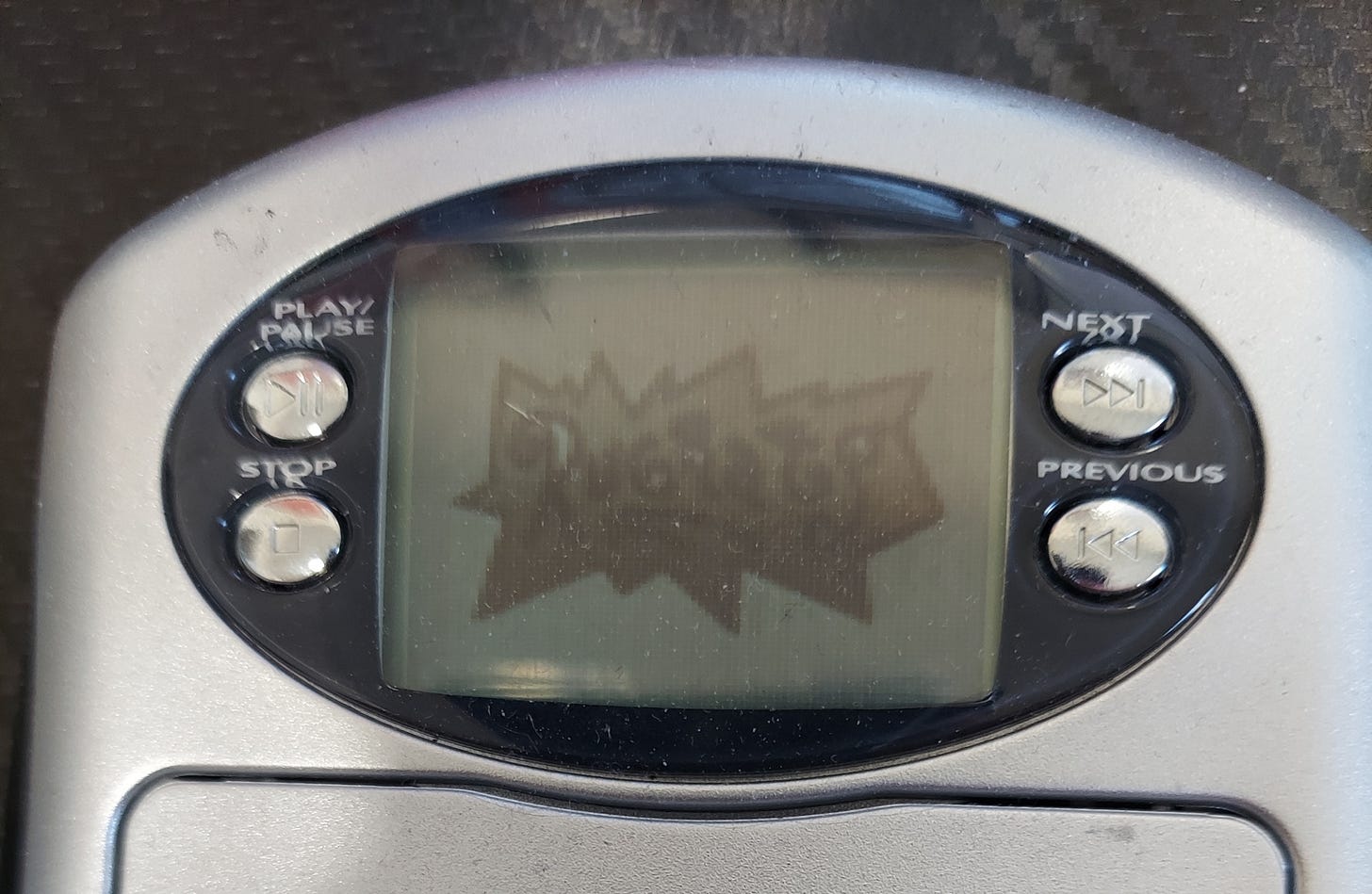The Shallow and the Portable
Ongoing Reflections on Physical Media, Part 3
It's a crisp October day and my roommate is at work, so I have the apartment to myself. I sit down to watch a very strange double feature: Shrek (2001) and Shark Tale (2004), two DreamWorks animated films that would not, by themselves, be particularly unusual. But I'm watching these two films on a Game Boy Advance SP. Specifically I've gotten my hands on the Shrek/Shark Tale two pack that promises worse quality -- even compared to other Game Boy Advance (GBA) Video titles -- in exchange for the convenience of two movies in one cart.
The SP is nice for this endeavor because it has a hinged screen with a natural tilt. But that’s where niceness ends. After approximately three hours watching movies on this tiny screen, my vision seems off, like everything is farther away and blurrier and I have tunnel vision. I think I'm actually sick now, and I may have irrevocably broken something in my brain. It was not worth it.
Compared to myriad other formats -- VHS, Beta, Laserdisc, DVD, Blu-Ray, 4K -- GBA Video cartridges are shallow: extremely limited in their uses and in their content. With a small catalog of animated films and television episodes, these carts are a bygone piece of physical media history that's not likely to ever return. In the realm of physical media, watching a movie on a (then-new, now-retro) gaming handheld is hardly optimal. But it has one thing going for it: it's portable.
GBA Video could be called a trailblazer. As writer Ana Diaz put it, "before we had tablets where we could download movies, before we had consoles with streaming services, there was the Game Boy Advance Video, leading the way." You could watch Shrek or Shark Tale (or both!) on the move and only risk probably a small amount of eye damage.
(Nintendo also created an official peripheral device, the Play-Yan, and its successor the Play-Yan Micro, that took an SD card and effectively turned a Game Boy Advance into a music and video player, provided those videos are properly low-res and can fit onto the SD card, which was a maximum of 1GB.)
Youtuber Nintendrew has documented the catalog of the GBA Video carts and their technologies. GBA Video titles were released beginning in 2004 as a reaction to Hasbro's 2003 VideoNow product, another strange home video format that must be addressed in itself. VideoNow was a discreet player that played small discs which generally held television episodes. As with GBA Video, I could find that only a few feature films were ever released via Personal Video Disc (PVD), the discs read by VideoNow and future iterations like VideoNow Color (yes, color was apparently extra).
Aside from picture quality, one advantage of GBA Video over VideoNow is that Nintendo's target market likely already owned a Game Boy Advance, thus easing the financial pain of buying into not only video units but the players themselves. By literally slotting video technology into an existing (and still awesome after all these years) gaming device, GBA Video is the clear winner of this tech war, even if the loser, as always, is your wallet. Game Boy Advance Video cartridges can now go for upwards of $50 on the secondary market. People love nostalgia.
All of this doesn’t even mention the much larger catalog of UMDs (Universal Media Discs), the more adult-marketed discs played by the PlayStation Portable (PSP). A contemporary of GBA Video, UMDs are miniature optical discs that had not only a much larger catalog but a much longer run period: the Museum of Obsolete Media puts the lifespan from 2004 through 2011 for films (2014 for games).
UMDs had a broad array of titles, generally what you might expect from a more adult-oriented line: while you can, on eBay, locate family titles like Ice Age: The Meltdown, the platform is filled with contemporary horror films like Saw and Hostel, eighties fare like The Goonies and Escape from New York, and anime features like Perfect Blue and Paprika. Even Troma classics Cannibal! The Musical and The Toxic Avenger are out there on UMD. And of course, there’s pornography to be found on the format as well, in case you need to masturbate on a bus in 2007.
With these formats having come and go, they exist as strange ghosts of modern consumer culture. These formats are not in the midst of a comeback but merely shambling their way through the eternally echoing corridors of the internet and strange geek conclaves. Even as the capricious nature of streaming highlights the value of physical media, portable formats like GBA Video and UMD remain an unhelpful archive and odd historical footnote.




